How to Clean a Browning BAR

Cleaning a gun is not as fun as shooting it, but it is vital to maintain your firearm for it to continue operating optimally. A Browning BAR is a highly accurate gun, which could be why many shooters use it for hunting.
But like all other firearms, it does require cleaning. Although it is tasking and time-consuming to clean a Browning BAR, particularly if you have to disassemble it, it is necessary if you want to keep hitting your targets.
A dirty gun can reduce its accuracy and overall performance .
An extremely dirty rifle can result in malfunction problems, which is not ideal because this could lead to serious injury.
If you are a new owner of a Browning BAR and you don’t know how to go about cleaning it, read on.

The first important step when gun cleaning is to remove the magazine . Never start cleaning a loaded gun as it can cause severe injury to yourself or people near you.
Check to see if the chamber is empty, and to do this, pull the operation handle backward. If there is a live round, it will be ejected. Once you have done this, make sure that the safety is in “on safe” position .
Pull the bolt backward using the operating handle; at this point, if you have already removed the magazine, you will need to open the bolt and, with your hand, push the bolt release lever upwards to lock the action open.
Take your cleaning rod and wrap a cleaning patch on it and pass it through the barrel. Do this a couple of times to make sure that you remove all the dirt, grime, oil, and powder residue. Be careful not to hit the crown with the rod to prevent damaging this area. Any damage to this section can significantly reduce the accuracy of your firearm.
Check the bore and chamber for carbon fouling. You may see some powder residue which is expected if you have fired a couple of rounds. To remove the residue, use a cleaning patch and your cleaning rod. Make sure to wet the patch with a gun cleaning solvent first before you attach it to your cleaning rod.

But if the carbon fouling is heavy, you need a bore brush to scrub it off. Therefore, apply some gun cleaning solvent on the brush and then scrub the bore and chamber as best as possible to loosen up the fouling.
Once you are done scrubbing the bore, take a clean patch, attach it to your cleaning rod, and wipe the bore dry. Then take an oiled patch and pass it through the bore. Don’t use too much oil as excessive oil can attract dirt .

Step 6:
Make sure to clean the receiver as well. To do this, you need to remove the trigger group first. Ensure that your gun is unloaded, depress the bolt release lever to move the breechblock forward, push the trigger guard pins on either side of the receiver, hold the trigger guard, and take out the trigger group from the receiver.
Remove any oil, grime, or dirt in the receiver and the other parts using a wet cleaning patch, and then use an oiled patch to coat the cleaned pieces. Avoid pouring too much oil into the action to prevent the oil from getting into the wood. If this happens, the wood may warp or soften.
Always use gun cleaning solvents, cleaning patches, and oiled designed for your rifle.
Step 7:
Wipe all the metal parts with an oiled patch or rag. A rag would be easier to use since you are cleaning a long gun. Remove fingerprints as moisture can accumulate in these areas, which may result in rusting or corrosion. Make sure to wipe down the exterior of your gun properly before storage .
Step 8:
Wipe the wood surfaces with a light oiled rag or use quality furniture and wood polish. Doing this will enhance the durability and beauty of your Browning BAR.
Step 9:
Once you are done with lubing all the parts of your rifle, the next is to reassemble. Make sure to do it properly to avoid malfunction problems that may result in severe injury.
Safety Precautions for Handling a Browning Bar
A Browning BAR is a powerful rifle, and as such, it should be handled with care.
Careless handling of any gun can cause severe injury.
Therefore, when cleaning a gun, make sure to take all the necessary measures to prevent injury.

- Always keep your gun’s muzzle pointed in a safe direction even if it is not loaded, and never test your rifle when it is loaded or pointed in an unsafe direction.
- Never transport your gun when it is loaded, even if it’s in a gun case.
- Before you check your gun for a barrel obstruction, make sure that it is not loaded, and the chamber and the feeds mechanism are empty.
- Always place the safety in the “On Safe” position and ensure that the chamber is empty before checking the barrel for obstructions.
- Store your gun and ammunition separately where no one can access them. Never store a loaded weapon for safety reasons.
- Use the correct ammunition for your gun. If you preload your ammo with gunpowder, make sure to use the suitable powder at the right measurements to avoid accidents.
- Do not place your fingers on the trigger when loading and unloading your firearm.

- Wear eye and ear protection when shooting your rifle
- Be careful not to drop a loaded gun as it may accidentally fire.
- Never handle a loaded gun when under the influence of alcohol or medication.
Final Remarks
No matter what type of firearm you have, always respect it. Guns are exciting to shoot, but they are also dangerous, and when handled poorly, this can result in injury. Follow our guide when cleaning your Browning BAR and use your gun’s instruction manual when disassembling and reassembling your gun to avoid any problems.

Leave a Comment Cancel reply
How to Clean a Browning Bar Like a Pro (Updated: Apr 2024)
Let’s learn How to clean a browning bar gun in this article.
Cleaning a gun is not as much fun as firing it, but keeping your handgun in good working order is necessary. A Browning BAR is an extremely accurate gun, which may explain why so many hunters use it.
It does, however, require cleaning, just like any other gun. Cleaning a Browning BAR is difficult and time-consuming, especially if you have to disassemble it, but it is important if you want to start pressing your targets.
A filthy gun’s accuracy and overall performance might suffer.
Keep reading to learn how to clean a browning bar.
How to Clean a Browning Bar?
![How to Clean a Browning Bar Like a Pro (Updated: [mon] [year]) 2 cleaning browning rifle](https://www.gunsafetynow.com/wp-content/uploads/2022/03/cleaning-browning-rifle-1-1024x576.png)
Follow these steps to clean a browning bar without any hassle.
When cleaning a gun, the first stage is to detach the mag. Never start by cleaning a loaded gun because you might injure yourself or those around you. To do so, pull the operating handle rearward to see if the barrel is empty. A live round will be expelled if there is one. Once you’ve done so, double-check that the safety is set to “on safe.”
Pull the bolt backward with the working handle; if you haven’t previously removed the mag, open the bolt and press the bolt shifter lever upwards with your fingers to lock the mechanism open.
Wrap a cleaning patch around your cleaning rod and feed it through the barrel. Repeat it a few times to ensure that all filth, grime, oil, and powder residue is removed. To avoid harming the crown, be cautious not to strike it with the rod. Any damage to this component might drastically affect your firearm’s accuracy.
Check for charcoal fouling in the cylinder and chamber. If you’ve fired a few rounds, you’ll notice some powder dust, which is anticipated. Use a cleaning cloth and your scrubbing rod to eliminate the residue. Before connecting the patch to your wiping rod, make sure you soak it with a gun cleaning solution.
However, if the carbon fouling is severe, a bore brush will be required to remove it. Soak the brush with gun cleaning solution and scrub the barrel and cylinder as thoroughly as possible to dislodge the fouling.
After washing the bore, put a clean patch on your scrubbing rod and wipe the cylinder dry. After that, insert an oiled patch into the bore. Excessive oil might attract dirt, so don’t apply too much.
Make sure the receiver is also clean. To do it, you must first delete the trigger group. Dampen the bolt shifter lever to advance the breechblock up, push the triggering guard pins on each side of the receiver, grip the trigger gate, and pull the trigger block out from the recipient.
Using a manual cleaning patch, remove any grease, grime, or dirt from the receiver and other components, and then cover the cleaned portions with a slippery patch. Don’t pour too much into the motion to keep the oil from going into the wood. The wood may twist or soften as a result of this.
Step 4
Using an oiled patch or rag, wipe off any metal pieces. Because you’re cleaning a long rifle, cloth would be more convenient. Fingerprints should be removed because moisture can collect in these locations, causing rusting or corrosion. Before storing your gun, make sure to clean the outside thoroughly.
Use a soft oiled rag to wipe down the wood surfaces, or use high-quality furniture and wood varnish. This will help your Browning BAR last longer and look better.
After you’ve finished lubing all of your rifle’s components, it’s time to put it back together. Make sure you do it correctly to avoid difficulties with malfunctioning equipment that might result in serious damage.
Always appreciate your firearm, regardless of the type. Guns are fun to shoot, but they’re also hazardous, and they can cause damage if handled incorrectly.
To avoid any complications, follow our instructions for cleaning your Browning BAR and refer to your weapon’s instruction manual before dismantling and reassembling it. Stay tuned for more posts on gun cleaning and maintenance.
gunsafetynow .com is reader-supported. When you buy through links on our site, we may earn an affiliate commission.
I'm an passionate gun cleaning expert from NY US. My goal is to save you time by doing the leg work for you and putting all the essential information in one location to be confident about the cleaning your gun.
Related Post
Dry Lube vs Wet Lube for Gun: Which One to Choose?
How to clean a remington 30-06 semi-auto rifle properly, leave a comment cancel reply.
Save my name, email, and website in this browser for the next time I comment.
Press ESC to close
A guide to disassembling and cleaning the browning bar.
- Fieldstripping How-To's , Browning , DIY Gunsmithing , Sort By Manufacturer
- August 11, 2023

In this article, you will learn a step-by-step guide on how to disassemble and clean the Browning BAR firearm. This guide will provide you with detailed instructions as well as a video demonstration for visual learners. Additionally, you will gain some historical context about the Browning BAR, adding to your knowledge of this iconic firearm. By the end of this article, you will have the necessary information and skills to properly maintain your Browning BAR.
Table of Contents
The Browning BAR, short for Browning Automatic Rifle, is a popular firearm known for its exceptional reliability and performance. In this guide, we will provide you with step-by-step instructions on how to disassemble and clean your Browning BAR, as well as provide some historical background on this iconic firearm.

This image is property of i.ytimg.com.
Introduction to the Browning BAR
The Browning BAR was first introduced in 1967 and quickly gained popularity among hunters and shooters. Its semi-automatic design, combined with its solid construction, makes it a versatile and dependable firearm suitable for a wide range of applications.
Features of the Browning BAR
The Browning BAR boasts several notable features that set it apart from other firearms in its class. One such feature is its gas-operated system, which helps reduce recoil and allows for smoother cycling of the action. Additionally, the BAR is equipped with a detachable box magazine, providing quick and easy reloading capabilities.
Historical background of the Browning BAR
The Browning BAR has a rich history that dates back to the early 20th century. The original Browning Automatic Rifle, often referred to as the BAR M1918, was introduced during World War I and saw extensive use by American forces. While the modern Browning BAR differs significantly from its predecessor, it still pays homage to its historical roots.
Necessary Tools and Materials
Before proceeding with disassembling and cleaning your Browning BAR, you will need to gather a few tools and materials:
Tools required for disassembling the Browning BAR
- Screwdriver (typically of a flat-head or Phillips-head variety)
- Punch or drift pin (used for removing certain pins)
- Armorer’s wrench (for removing barrel components)
- Cleaning rod and bore brush
- Cleaning patches
- Solvent and lubricant
- Nylon or brass brush (for scrubbing hard-to-reach areas)
Cleaning materials needed for the Browning BAR
- Gun cleaning solvent
- Gun oil or lubricant
Now that you have the necessary tools and materials, let’s proceed with disassembling your Browning BAR.

This image is property of www.bevfitchett.us.
Disassembling the Browning BAR
Step 1: Unloading the firearm
Before disassembling any firearm, it is crucial to ensure that it is unloaded. Remove the magazine (if still inserted) and visually inspect the chamber to verify that there is no round present. Always prioritize safety when handling firearms.
Step 2: Removing the bolt
To begin disassembly, pull the bolt handle all the way back, allowing the bolt carrier group to move freely. Rotate the bolt handle upward until it locks into position. Next, push the retaining pin located at the rear of the receiver from left to right. This will release the bolt and allow you to remove it from the firearm.
Step 3: Breaking down the receiver
To break down the receiver further, depress the takedown button located on the left side of the receiver, just above the trigger guard. While holding the takedown button, pivot the barrel and gas system assembly downward, away from the receiver. This will separate the two main components of the firearm.
Step 4: Removing the magazine and trigger assembly
With the barrel and gas system assembly removed, you can now remove the magazine by pulling it downward and out of the firearm. Additionally, the trigger assembly can be removed by pushing the two retaining pins located on either side of the receiver. Once the pins are pushed out, the trigger assembly can be lifted out of the firearm.
Step 5: Taking apart the barrel and gas system
To disassemble the barrel and gas system, first ensure that the firearm is in a safe and secure position. Using an armorer’s wrench, unscrew the barrel nut located at the front of the gas block. Once the nut is removed, the gas block, piston, and other components can be disassembled and cleaned individually.
Now that you have successfully disassembled your Browning BAR, let’s move on to the cleaning process.
Cleaning the Browning BAR
Step 1: Cleaning the barrel
Start by attaching a bore brush to a cleaning rod and soak it in gun cleaning solvent. Insert the rod into the chamber end of the barrel and push it through, ensuring that the brush makes contact with the entire length of the barrel. Repeat this process several times, applying additional solvent and using clean patches to remove any fouling or residue.
Step 2: Cleaning the receiver and bolt
Using a soft brush or cleaning patches soaked in solvent, clean the inside of the receiver and the bolt carrier group. Pay close attention to the extractor and ejector, as these areas tend to accumulate dirt and debris. Use a punch or drift pin to remove any stubborn fouling or residue.
Step 3: Cleaning the gas system
The gas system of the Browning BAR is a critical component that requires regular cleaning. Use a nylon or brass brush to scrub the gas ports and gas piston, ensuring that they are free from any obstructions. Wipe down the gas block and other gas system components with a clean cloth soaked in solvent.
Step 4: Lubricating the parts
After cleaning, it is important to apply a thin coat of gun oil or lubricant to all moving parts to ensure smooth operation. Pay close attention to areas such as the bolt, trigger assembly, and gas system components. Be sure to follow the manufacturer’s recommendations for the appropriate type and amount of lubricant to use.

Inspecting and Maintaining the Browning BAR
Before reassembling your Browning BAR, it is important to inspect all parts for wear and tear. Check for any signs of damage or excessive wear, such as cracks, dents, or corrosion. Address any issues promptly to ensure the safe and reliable operation of your firearm.
Reassembling the Browning BAR
Step 1: Reassembling the barrel and gas system
To begin reassembly, reverse the disassembly process by attaching the gas system components and screwing on the barrel nut. Ensure that all components are properly aligned and tightened to the manufacturer’s specifications.
Step 2: Installing the magazine and trigger assembly
With the barrel and gas system reassembled, you can now insert the magazine back into the firearm. Then, carefully place the trigger assembly back into the receiver, making sure that it is properly seated.
Step 3: Assembling the receiver and bolt
To complete the reassembly process, pivot the barrel and gas system assembly upward, aligning it with the receiver. Push the two components together until they fit snugly, and ensure that the takedown button locks into place. Finally, reinsert the bolt into the receiver, making sure that it is fully seated.

Testing and Fine-tuning
After reassembling your Browning BAR, it is important to test its functionality. Check for proper cycling and operation by manually cycling the action and dry firing the firearm (ensuring it is pointed in a safe direction). Additionally, take the time to fine-tune any adjustable components, such as sights, to suit your preferences and shooting style.
Safety Precautions
Handling firearms with care is of utmost importance. Always follow basic firearm safety rules, such as treating every firearm as if it is loaded, keeping your finger off the trigger until ready to shoot, and pointing the firearm in a safe direction at all times. When disposing of cleaning materials, be sure to follow local regulations and guidelines. Finally, store and transport your Browning BAR in a safe and secure manner to prevent unauthorized access and accidental discharge.

This image is property of i.ebayimg.com.
Frequently Asked Questions
As an owner of the Browning BAR, you may have some common queries about disassembling and cleaning your firearm. Here are a few frequently asked questions and expert tips to help address them:
- Q: How often should I clean my Browning BAR? A: It is recommended to clean your firearm after every use to maintain its performance and longevity. However, if you have not used your firearm for an extended period, it is advisable to clean it before using it again.
- Q: Can I use any type of solvent and lubricant for cleaning my Browning BAR? A: It is best to use products specifically designed for firearms. Avoid using harsh chemicals or petroleum-based lubricants, as they may cause damage to the firearm.
- Q: Do I need any special tools to disassemble and clean my Browning BAR? A: The tools mentioned earlier, such as a screwdriver, punch or drift pin, and an armorer’s wrench, are commonly used for disassembling and cleaning firearms. These tools are readily available at most gun stores or online.
Expert tip: It is a good idea to keep a small cleaning kit with you whenever you take your Browning BAR to the range or on hunting trips. This allows you to perform basic cleaning and maintenance tasks while out in the field.
Regular cleaning and maintenance are essential for the proper functioning and longevity of your Browning BAR. By following the step-by-step instructions provided in this guide, you can ensure that your firearm remains in optimal condition. As you become more comfortable with the disassembly and cleaning process, you will gain a deeper appreciation for the craftsmanship and history behind the Browning BAR.
A Guide to Cleaning and Disassembling Ruger Mark (I-IV) Series Pistols
How to disassemble and clean the browning a-bolt, book your appointment in mesa.

Deal Partners

How to use this site
Thanks for stopping by here’s how to navigate our site:.
- Categories: Use the links above for specific support and knowledge.
- Search: Use the icon above to find topics by word or phrase.
- Recent Posts: Click on any interesting recent post from the list below.
We appreciate your visit!
Learn about Lasers – Sponsor

Recent Posts
- Product Spotlight: Foxtrot Mike Lower Receivers
- Smyth Busters: Do You Need a Muzzle Brake on an AR-15?
- Product Spotlight: Foxtrot Mike Slap Mod
- Smyth Busters: Is it Ethical To Hunt Deer With a .223?
- Product Spotlight: SOTAR Cam Pin by Forward Controls Design
- Smyth Busters: Will Excess Bullet Setback Blow Up Your Gun?
- Smyth Busters: How Important Is Proper Firearm Terminology?
- Product Spotlight: B5 Systems P-Grips for AR-15
- Smyth Busters: Was the 5.56 / .223 Round Designed To Wound?
- Product Spotlight: MultiTasker M:4 Multi-Tool
- Product Spotlight: Bravo Company Mk 2 Recoil Mitigation System
- Smyth Busters: Will Tracer Ammo Burn Out My Rifle’s Barrel?
- Smyth Busters: Does a 5.56 NATO Bullet Tumble in Flight?
- Product Spotlight: MultiTasker Nano 2 & Magpod
- Smyth Busters: Does the AR-15 REALLY Need a Forward Assist?
- Product Spotlight: Midwest Industries Alpha M4 Stock
- Product Spotlight: Brownells BRN-180 13.9″ & 14.5″ Uppers
- Smyth Busters: Do You Have To Pin an AR-15 Gas Block?
- Smyth Busters: Is Ceramic Body Armor a One-Hit Wonder?
- Product Spotlight: Forward Controls Panel Cable Management
- Smyth Busters: Is the AR-15’s Dust Cover Really Necessary?
- Product Spotlight: Unity Tactical AXON Remote Switch
- Product Spotlight: BRN-15 Upper Receiver Deep Dive
- Smyth Busters: Do You Have To Follow Torque Specs?
- Smyth Busters: Is the .40 S&W Cartridge Obsolete?

Amazon Affiliate / All Affiliates
Disclosure: As an Amazon Associate, I earn from qualifying purchases. Note: Any affiliate links, Amazon or others do not cost you extra and the sales help support the site. Thanks in advance!

- Login Login Login --> Login -->
Browning’s BAR - Ask the Man who has One!
other By: Stan Trzoniec | May, 24
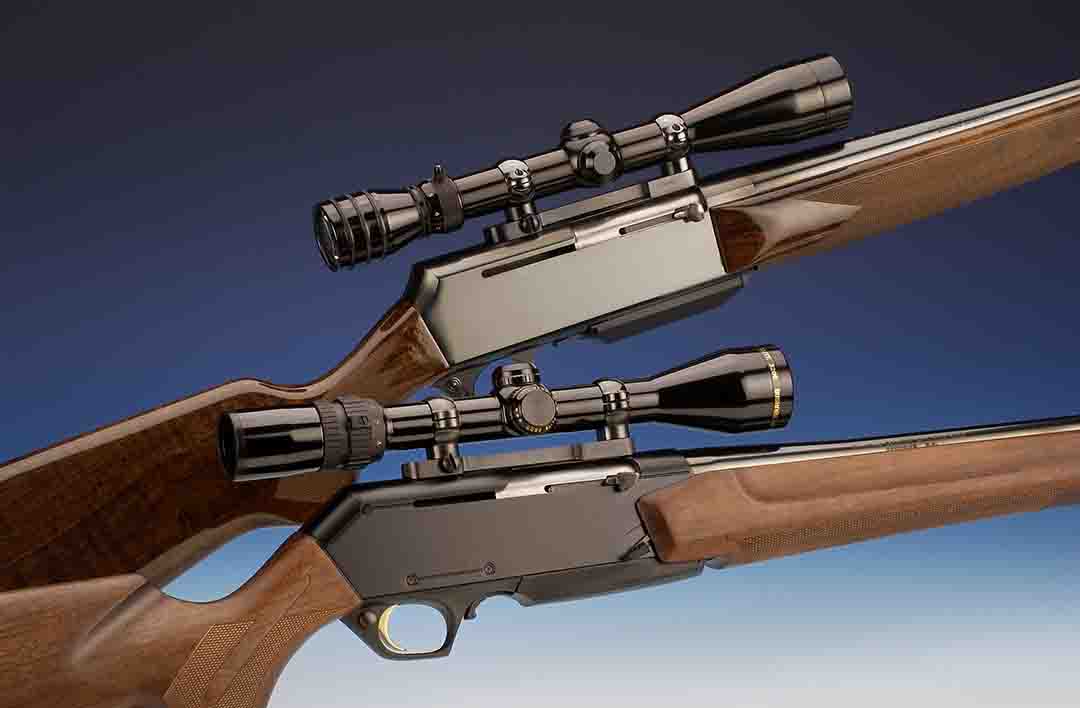
Friend Joe Pirani was a Browning fan from the word go. He had Browning Superposed shotguns for field and trap and when it came to rifles, he was stuck on the BAR (Browning Automatic Rifle) that went with him on all his hunting trips. When we did get to serious discussions relating to the gun on an antelope/mule deer hunt near Jordon, Montana, many years back he told me, “It is dependable, accurate, but most of all, for the .30/06 Springfield, it is easy on my shoulder.” For a senior like Joe, that was a big plus.
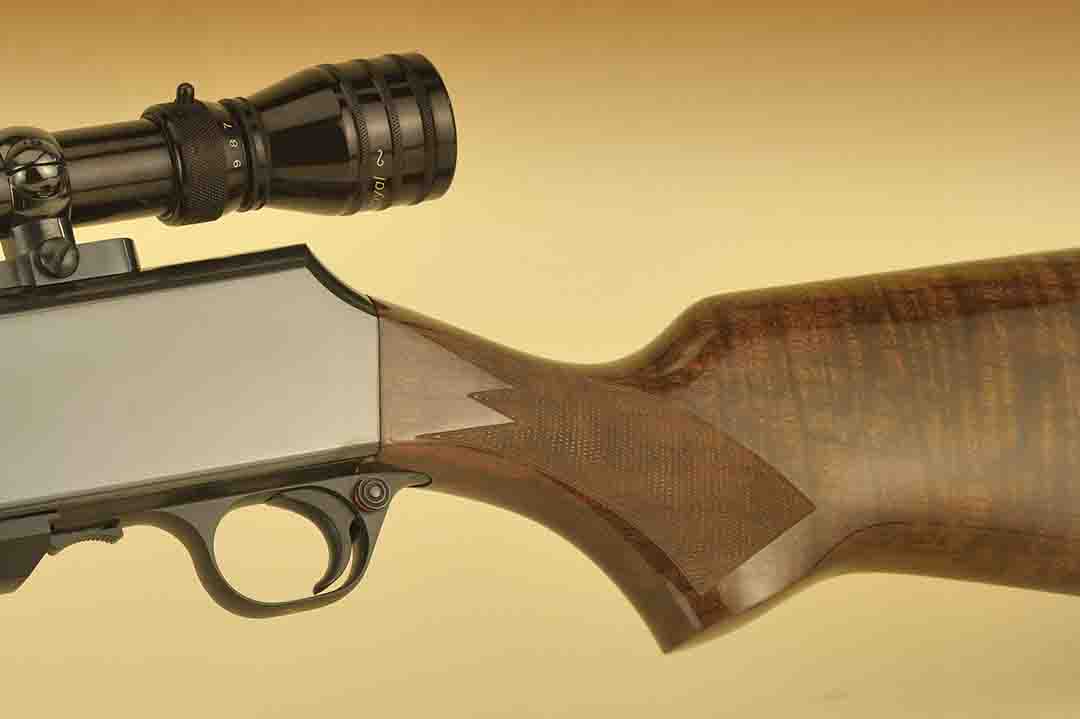
Of course, that got me thinking about the Browning BAR rifle. Sure, I’ve had my share of testing all types of semi-automatics in handguns, shotguns and rifles with most of my time going to the Benelli R1 and Remington Model 7400 that I found fairly accurate, but they were not as soft on my shoulder as I had expected. Talking to Joe and shooting his BAR semi-automatic in Montana for a final sighting-in really set me straight. Even with factory ammunition, his gun hit groups an inch and a half or less at the century mark. I was hooked, ordering one in the 7mm Remington Magnum upon my return home.
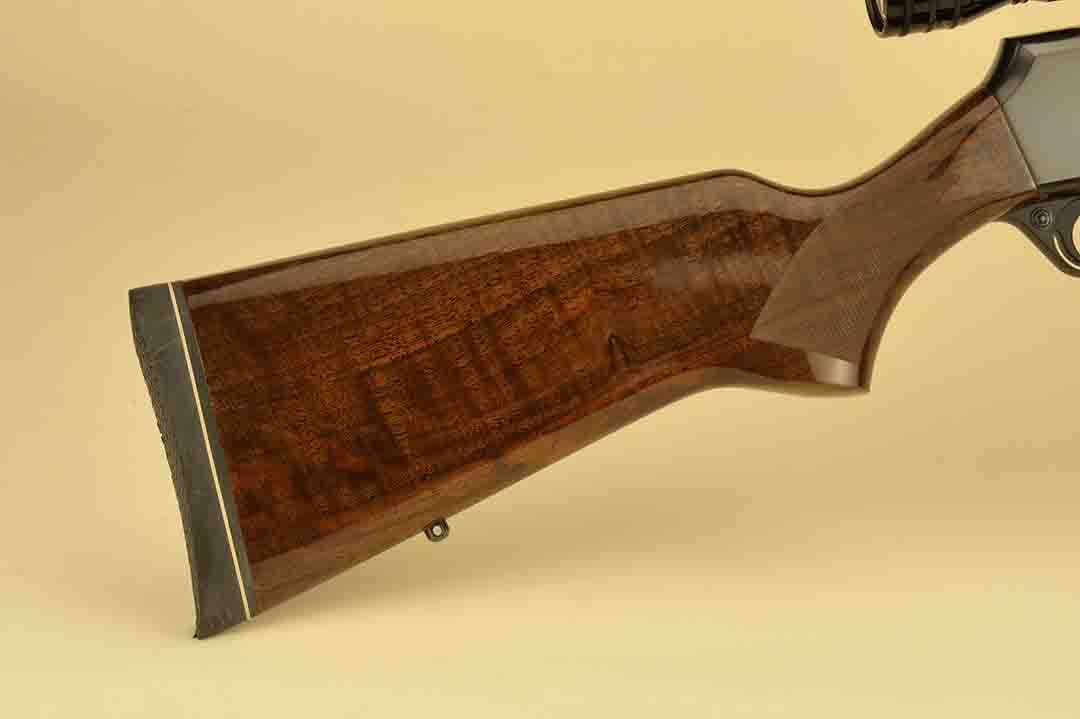
Considering the long history of Browning Arms, the BAR is a recent newcomer to the fold, which opened the door to a lot of shooters who wanted to use the higher-powered cartridges but because of recoil, stayed away. In any event, some 53 years ago, Browning introduced its first sporting semi-automatic rifle in the .243, .270, .308 Winchester and the .30-06 Springfield. To satisfy the magnum thirst for such a weapon, in 1968, the 7mm Remington Magnum was teamed up with the popular .300 and .338 Winchester magnums with the latter dropped from production in 1975.
Actually, design work started in 1963 and noting from a brief from Harmon Williams (former president of Browning) and other information, I found the content interesting. All were intent of keeping the BAR consistent with a “family appearance,” so a compromise was sought with the receiver for example, with features borrowed from the famed Auto-5 shotgun. They incorporated the celebrated humpback profile, but with less of a pronounced shape, toning it down a bit more to modern standards. A multiple 7-lug bolt for a strong lockup was next, which was secured within the rear portion of the barrel that led to the decision of chambering more powerful magnum cartridges.
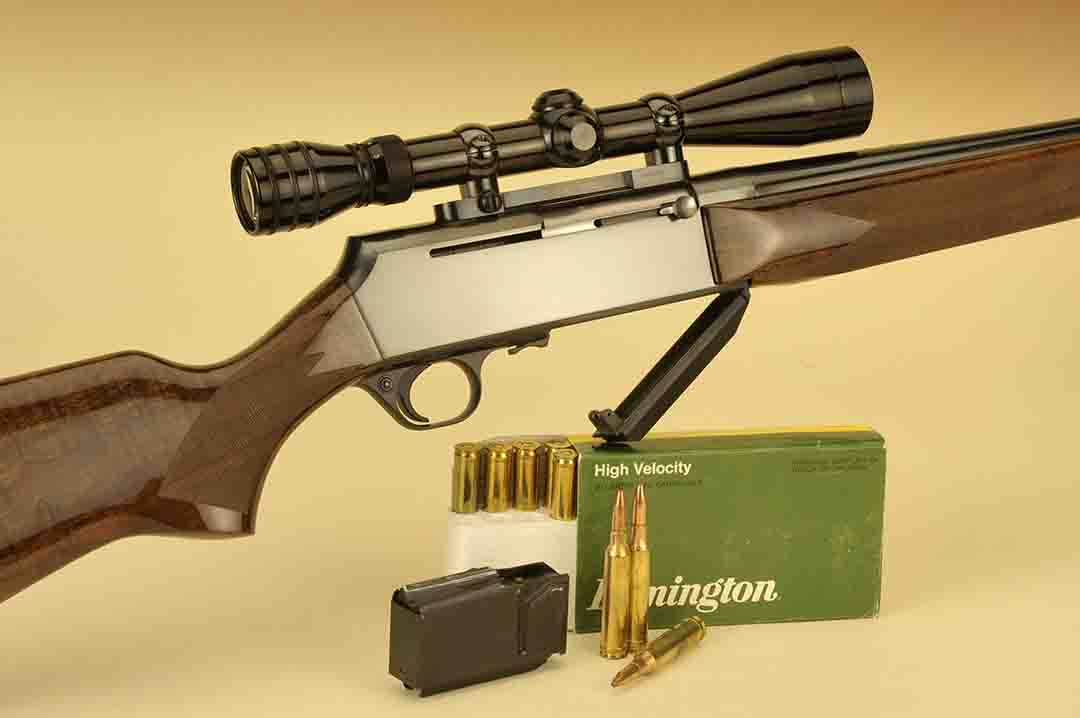
Naturally, in most cases, a gas-operated rifle offers a softer recoil sensation than a bolt or pump and the BAR does it in grand style. With my 7mm Remington Magnum, I was pleasantly surprised at the marked difference between this and other manually operated guns and I can see why hunters choose this gun in the larger, magnum chamberings. Spreading the recoil sensation over a longer period of time and with the inclusion of an internal buffer and rugged action and inertia block, to me the BAR excels in this field of hunting rifles, especially when it comes to looks and accuracy potentials.
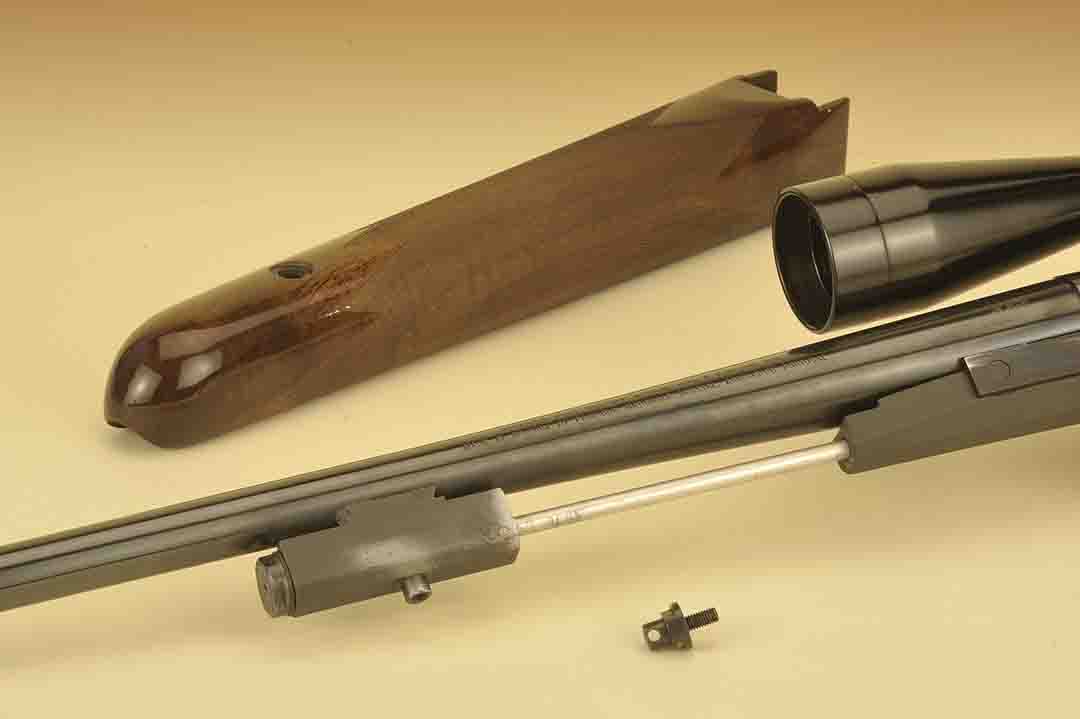
With a model lineup that includes the Mark II and MK 3, we will be discussing the former gun. The latter is an update on the original rifle with modern looks that will grab the attention of the more contemporary hunter. Naturally, being more recent, there is a choice of many finishes, stocks, barrel lengths and calibers. With my taste more to the higher end guns for looks alone, the model known as just the MK 3 (Third Generation) complete with a satin nickel receiver, oil finished Grade II stock and high relief engraving would be my choice. In the past, this gun and its variants, was also known as the Short or Long Trac gun before it moved into the more recent models.
Hunters who would like the more traditional BAR look would gravitate to the Mark II Safari grade, which is more to the appearance and styling of the original BAR rifle. Although my gun was purchased some years back, the current Mark II gun mimics the Grade I gun I have concerning how it looks, the feel and operation. For collectors, years past showed Browning had offered a Grade II (same as the Grade I but with an engraved receiver), along with Grades III, IV and V with highly-engraved and decorated receivers, fancy wood and specialized checkering patterns. Aside from all this, special models and Limited Editions filled out the line throughout the years.
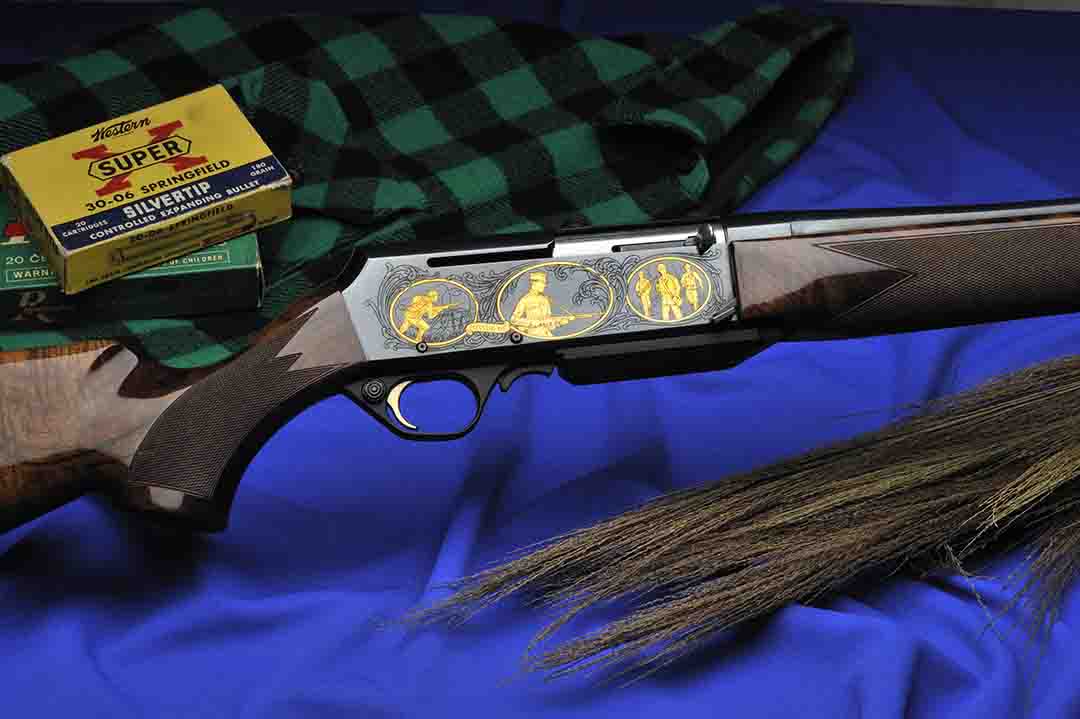
In the appearance department, it is hard to fault this gun with its select wood stock completed with a glossy, weatherproof finish. With previously made guns, figured wood was more of a standard item more so than today, and my gun has dark wood with a bit of fiddleback for character. During its design stage, it seems a lot of midnight oil was burned, as to me, it appeared that much thought went into the lines and design of the stock. Initially, when everyone was seemingly copying the “California” look with high combs with a fancy cheekpiece, the BAR was content with a more classic look. Holding the gun out on arm’s length, the influence of a bolt-action rifle with the rounded forend, well-proportioned forearm, all tapering back to the buttstock can be seen. The pistol grip has the right reach for the trigger finger when the hand is placed on the grip with the comb following through with the right dimension for the eye to center on the reticle of the scope.
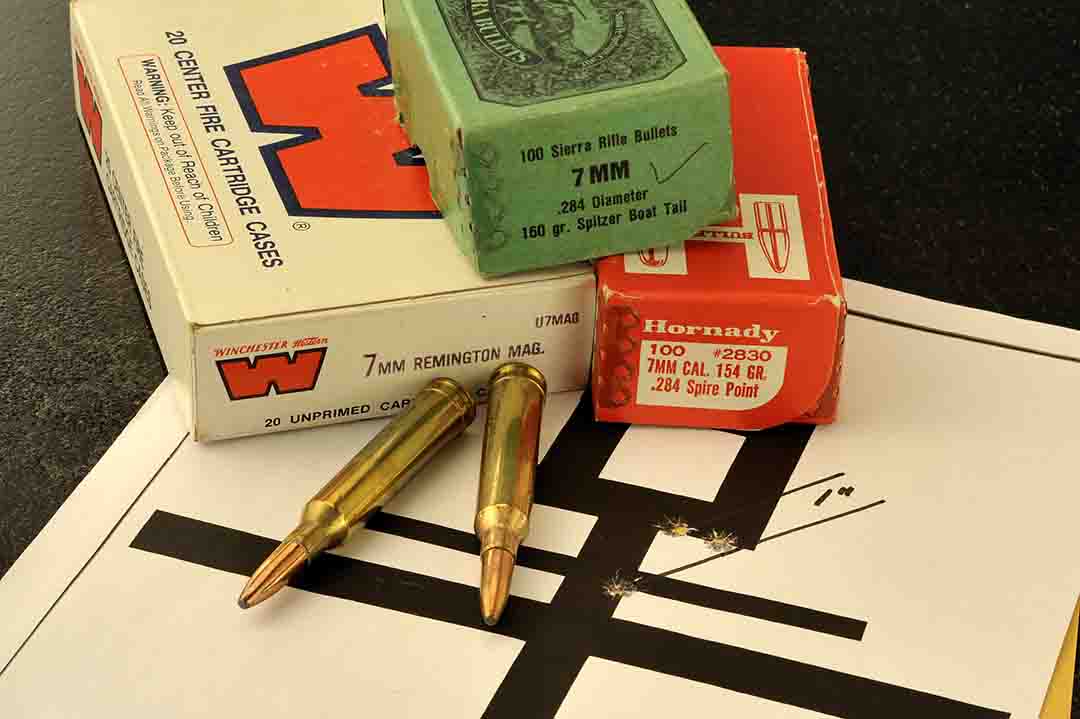
On the gun, there is more than an ample supply of checkering on both the forearm and the pistol grip. Since my gun was made some time back, I would assume it is all hand-cut, much before the age of computer generated checkering machines. Typical of Browning fashion, the checkering wraps completely around the forearm in a point pattern with a border to suggest a custom look. Inside the forearm is the gas-operated action and operating bar that ensured trouble free operation even with the higher-powered magnums. On the pistol grip, again one can see the value here with more checkering than it seems possible, considering the price tag. Complementing the gun, sling swivels and a classic-styled recoil pad finish the wood part of the gun.
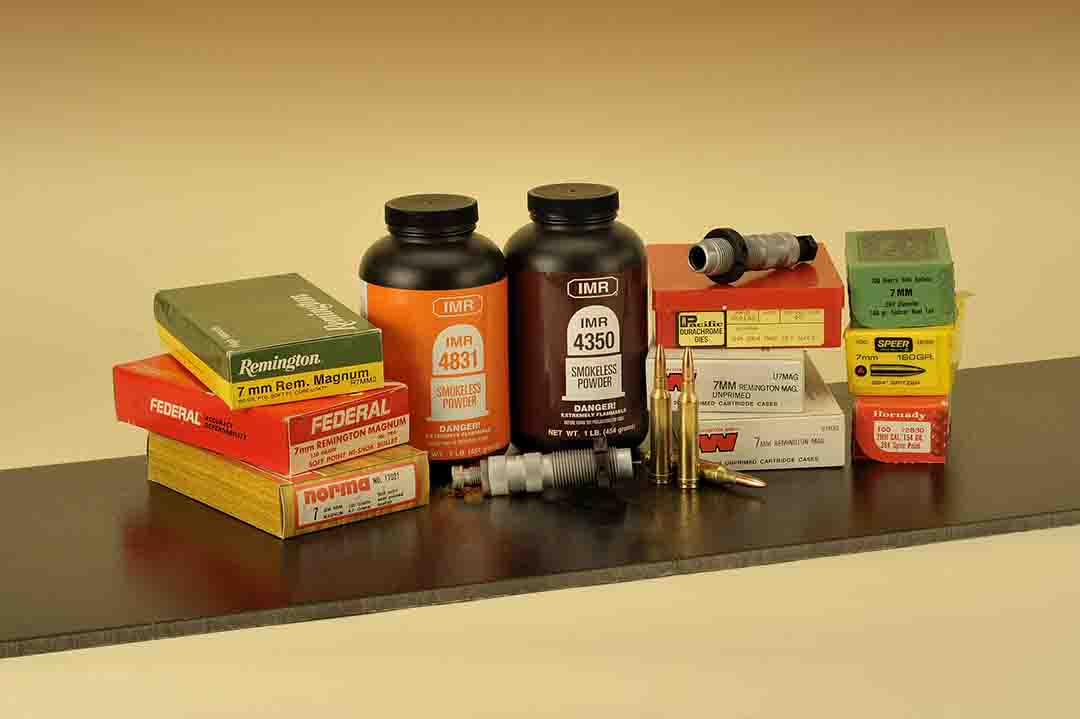
As you might have guessed, past and present day BAR’s show an accent of quality on all the metalwork. From the barrel to the receiver, all the polishing is smooth and of high quality befitting a gun of this stature. At the muzzle on my gun, there is a hooded sight with a rear sight, which I removed for scope mounting.
The receiver is the most impressive part of the gun. With a combined area of 32 square inches, which then lends itself to some fancy decoration in engraving with higher-grade models and high relief scroll engraving on current Mark II models. Within the top part of the receiver is the bolt port and its novel rotating bolt with seven locking lugs that are secured into the rear of the barrel after each shot. Trigger pull is a crisp 4 pounds and the safety, mounted behind the trigger, is a cross bolt design. These guns are equipped with a 3-, 4- or 5-round detachable magazine depending on caliber. Fit and finish of the gun in total on any gun I used or tested was first rate with nothing to complain about anywhere.
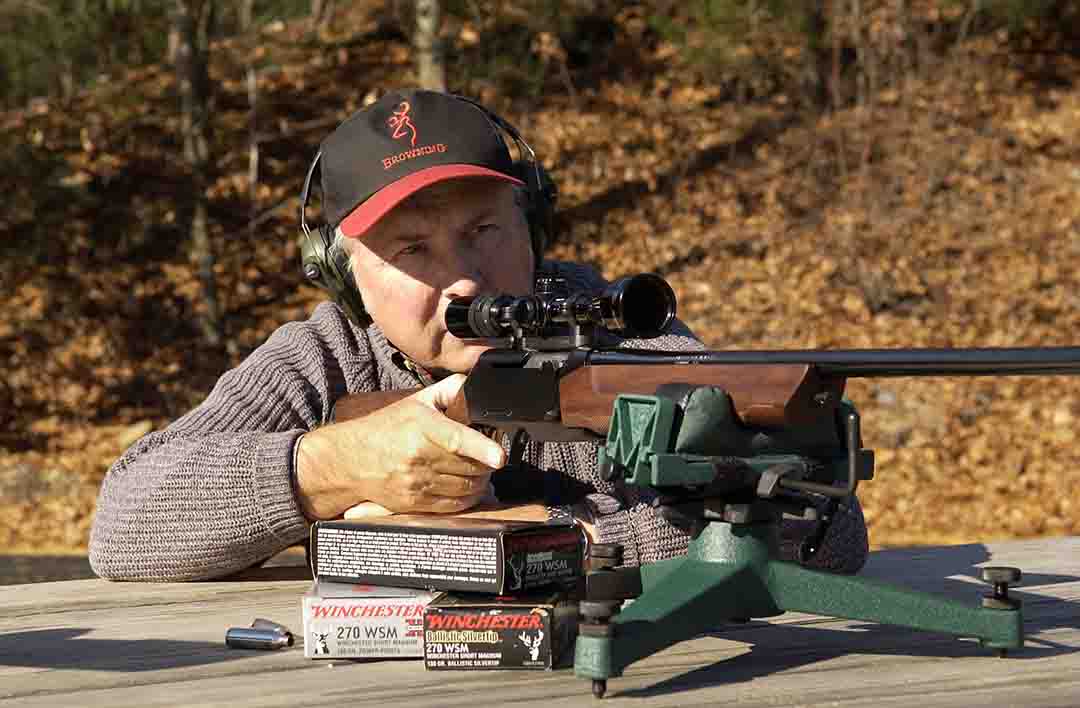
Chambered for the eight popular sporting cartridges, the lineup begins with the .25-06 Remington followed by the .308 Winchester, .270 Winchester, .30-06 Springfield and the .300 Winchester without the BOSS muzzle brake. If you want the optional brake, the choice is narrowed to the .270 Winchester, .30-06 Springfield and .300 Winchester. Due to the design of the gun and its recoil effect, I don’t think this brake is warranted, but if you have a physical problem, it will lessen the effect even more. As a footnote, if you opt for the more modern MK 3 rifle, chamberings do run from the .243 Winchester through the WSM calibers and up to the .300 Winchester Magnum.
Being teamed up with the popular 7mm Remington Magnum makes the Browning BAR a formable field weapon for all but the largest of western big game. Born in 1962, and while new to many shooters, the 7mm concept dates back as far as the turn of the century. Around 1912, there was the .275 H&H, a close cousin to the .375 H&H. Still later, wildcats started to rise with the .276 Dubiel, the .276 Newton and the .276 Newton Magnum, which according to research launched a 100-grain bullet over 65 grains of IMR-3031 powder for a then, unprecedented velocity of over 4,000 fps out of a 28-inch barrel with 1:12 twist. Moving on, the .280 Dubiel Magnum, then the .285 OKH with a unique duplex loading and the 7mm Weatherby Magnum.

However, I believe it was through the efforts of the western hunter Lew Bowman and Remington working closely on his ranch, that the 7mm Remington finally saw the light of day. With a capacity of around 87.0 grains of water (as measured to the neck and shoulder juncture), the 7mm Remington Magnum may be unpleasant to shoot in a bolt or pump gun, but I found in a semi-automatic like the BAR, recoil levels are more than acceptable to even the intermediate and advanced hunter.
With that in mind, while there is a wide selection of factory ammunition to choose from in all bullet weights, I found handloading the way to go with no special attention needed with a semi-automatic rifle. Naturally, to do all this, a good set of dies is necessary although I never did need a small base set for functioning or accuracy with my BAR. For the best results with slower burning, larger stick powders, trickling is necessary for precision as well as the attention to the details one would partake to get the most out of any rifle.
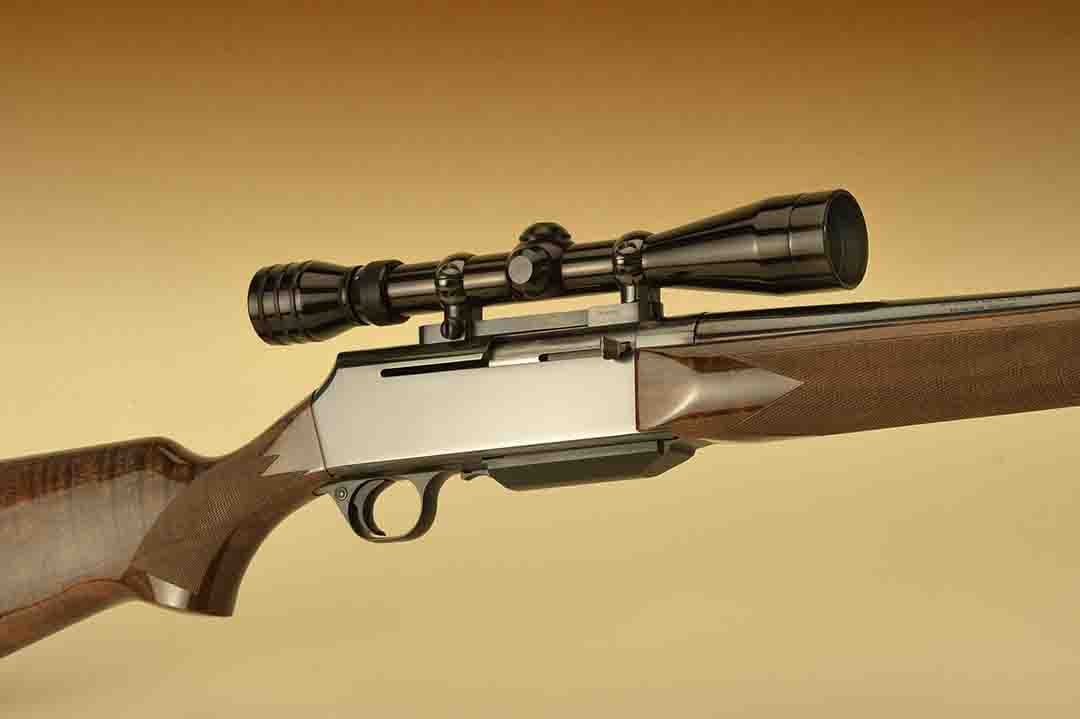
The only thing I would mention is to full-size all cases versus neck sizing to ensure complete and full cycling of the gun and more so, just before a hunt. I like to smoke, or mark a fired case while setting up the sizing die just to make sure the neck part of the die is working its way down far enough to ensure the proper tension on the neck. If you are working with a new gun, the assembly of a dummy cartridge complete with a bullet is a good way to make sure all is well before proceeding. Once the die is set, follow-up with the rest of the cases, clean, check for overall length and prime with Federal 215 primers.
Slow burning powders are the rule here. For those starting out, and to narrow down the field, I found the IMR-4350, IMR-4831 and H-4831 will give impressive results in accuracy and velocity readings without much work. Later, when handloaders want to broaden their base even more, they can venture into H-870, Norma MRP and IMR-7838. For velocities, in the 140-grain bullet range, expect around 3,150 fps, 154 grains 2,950 fps, 160 grains 2,850 fps and the heavy 175 grains, up to 2,900 fps with 66 grains of IMR-7828 for tight groups around or under one-and a half inches.
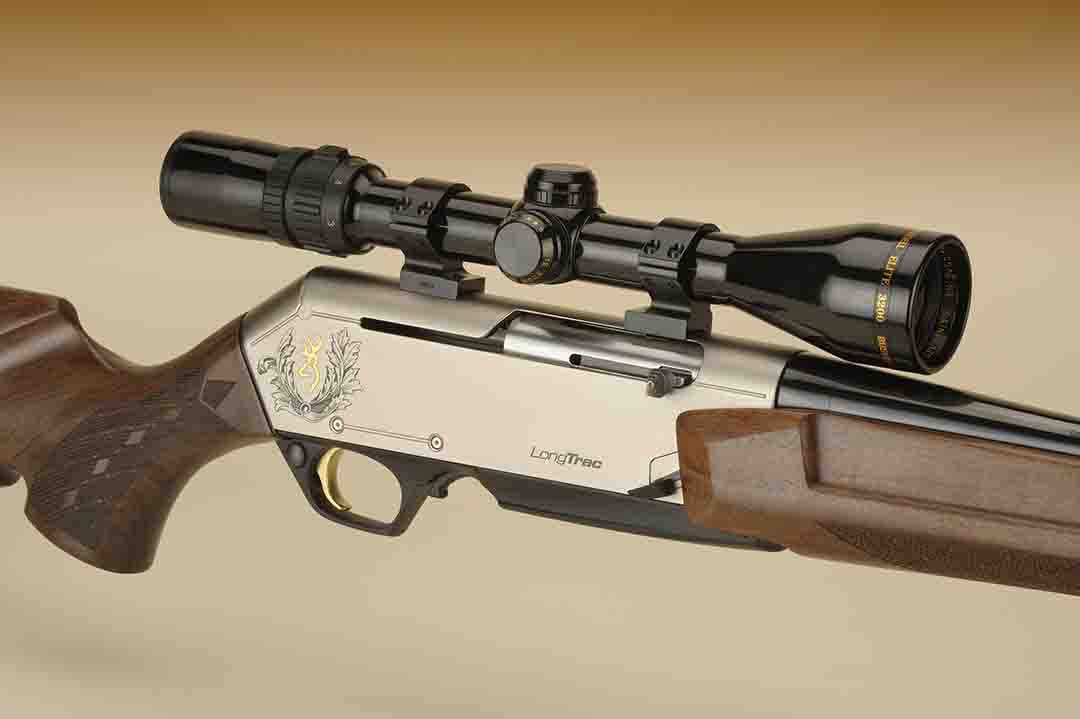
For my testing and shooting over long periods of time, it showed a wide majority of bullets by various makers are well suited to be used in the 7mm Remington. Common names like Hornady, Speer, Sierra and Nosler from 140 to 175 grains proved more than satisfactory when it came to powders still available during the pandemic at the various sporting goods and box stores with the BAR’s common 24-inch barrel length. The attached table included with this article, shows some of the better loads possible with the 7mm Remington Magnum in a semi-automatic sporting rifle like the Browning BAR.
In closing, a buyer could not go wrong with selecting the BAR chambered for the 7mm Remington. In many years past, the semi-automatic was frowned upon for serious hunting duties, but today, this combination is easy to shoot, a pleasure to reload, very efficient and in a worst-case scenario, factory ammunition is available in just about any part of the country.
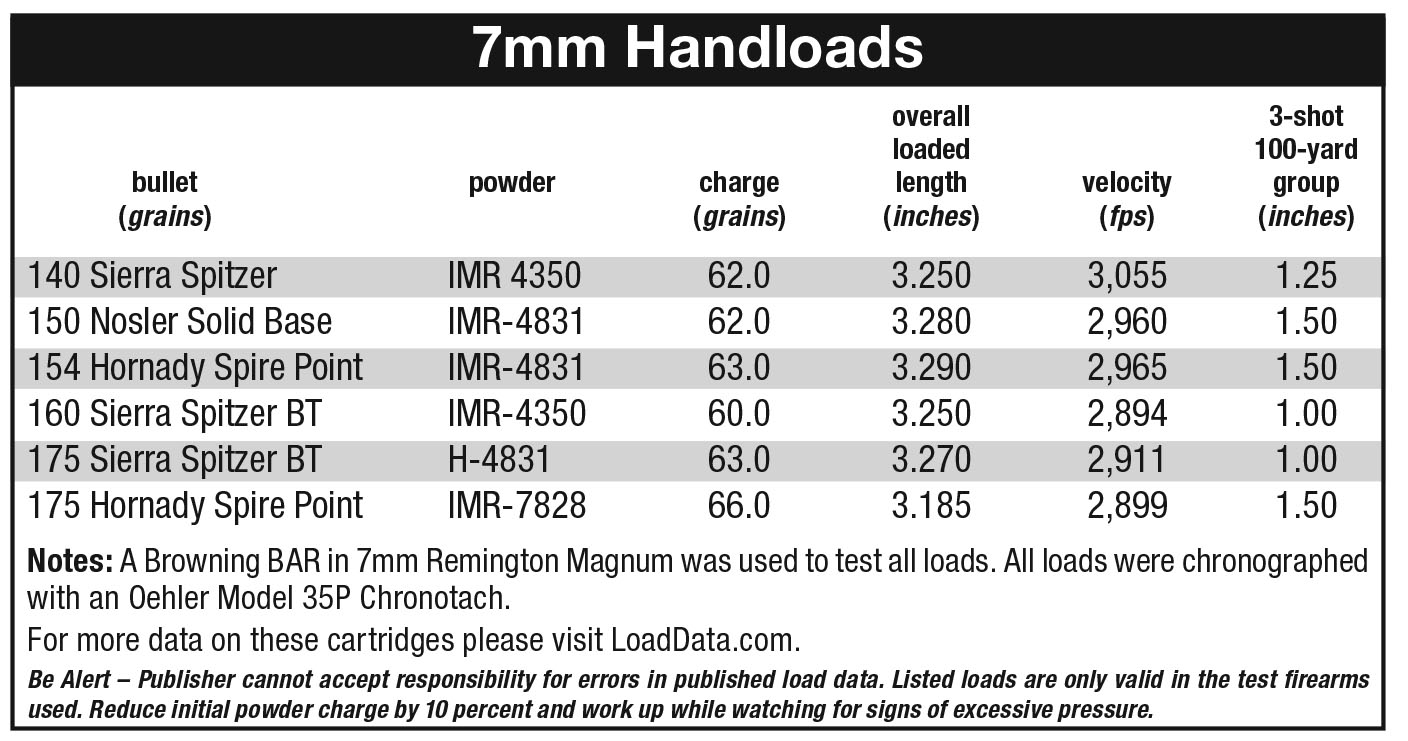
Log in or Sign up
You are using an out of date browser. It may not display this or other websites correctly. You should upgrade or use an alternative browser .
BAR Cleaning
Discussion in ' Browning BAR Rifle ' started by Corsair II Driver , Mar 7, 2015 .
Corsair II Driver Copper BB
As a newby to this forum and a new BAR Long Trac 30.06 owner I have a question regarding a thorough cleaning of my new rifle. My owners manual gives info on barrel cleaning & trigger group cleaning, but nothing on removing the forearm & cleaning the gas piston and gas cylinder area. How often do you BAR owners clean this area. Thanks. Jon
SHOOTER13 Guest
Welcome to the Browning Owners Forum Jon !! The LTV A-7 Corsair II was an awesome Vietnam era airframe... Thank you for your service to our great country !! As for your question...I'm not quite sure on that particular rifle, but I do know that a member here will be along to help shortly...
MZ5 .270 WIN
Hello, Jon, and welcome to the forum. You may wish to visit the FN USA website, and find the downloadable owner's manual for the FNAR. (Here it is for you: http://www.fnhusa.com/r/support/manuals/manuals-download/ ). The FNAR is an ugly, all-black version of a ShorTrac BAR with a heavy barrel, but the manual is _much_ better and more thorough, IMO. Basic mechanism appears to me to be the same between the ShorTrac and LongTrac BARs. Taking the forend off is quick and easy, but I don't plan to take the gas piston & cylinder apart too terribly frequently. For me, that means I'll not likely touch it more than every few to perhaps several hundred rounds (1 rifle match is normally 40 - 70 rounds). However, I need more time on the gun before I can say for certain whether that'll 'feel' right to me or not.
Thanks MZ5, you are correct, the manual is MUCH more thorough than the LongTrac manual. It answers what I need to know. I may not be taking the gas piston & cylinder apart that often either. Jon
rawright .22LR
Nice link, MZ5! I've got the Safari model in .30-06, but I'll bet there's only slight differences.
rawright, I'll be very interested to hear just how different the steel-receiver Safari is from the aluminum-receiver ShorTrac/LongTrac. From looking at some parts schematics at Brownells recently, I believe the current-production Safari II also has an adjustable gas block. I'm not sure the old ones were so equipped. In any case, I hope the designs are similar enough that the FNAR manual's procedures are still useful to you!
I'm looking forward to finding out how accurate the FN manual is, given the common ancestry. I know it won't be perfect, but it's scary to me to venture into the internals of a fine piece of precision machinery without any guide at all. I'm hoping that this manual will serve as a guide to the bits that aren't well described in the official (and completely inadequate) manual.
Share This Page
- No, create an account now.
- Yes, my password is:
- Forgot your password?

- Search titles only
Separate names with a comma.
- Search this thread only
- Display results as threads
Useful Searches
- Recent Posts

- Forum Listing
- Marketplace
- Advanced Search
- Technical Information
- Technical Questions & Information
Browning BAR II Safari
- Add to quote
Howdy folks, I have a Browning BAR II Safari that I got from my dad. I want to give it a good clean since he said he hasn't done it since he bought it in '94 and the action is starting to stick a little. I know how to get the trigger assembly out, but how do I get the bolt assembly and the spring out? Any help is greatly appreciated and as always, thanks for your time.
Peele, there are a few utube videos showing how to disassemble the BAR that might help you out. A friend of mine has one but as far as i know he has never taken it apart. Just put a search in on how to disassemble the browning bar safari.
Of all the things I've used YouTube for this one never occured to me.
Quick update: that was the most complicated firearm I have ever taken apart. But somehow some debris (looked like some smushed leaves) had gotten underneath the hand guard. But considering my dad never took it apart past taking the trigger assembly out, it was all surprisingly clean. The piston was unlike anything I had seen before today.
- ?
- 71.3K members
Top Contributors this Month
- Motorcycles
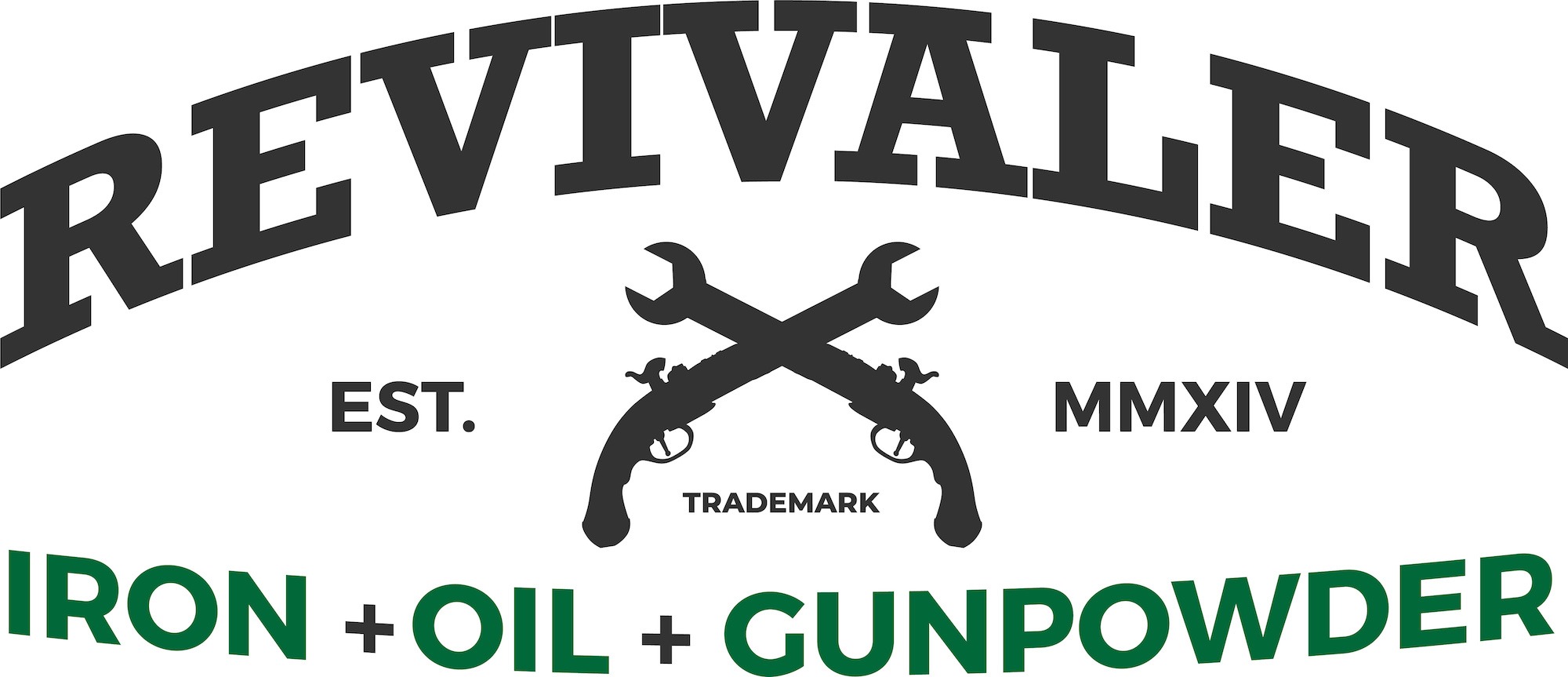
The Browning BAR Mark II Safari

The Browning BAR sporting rifle is not the same as the John Moses Browning BAR of World War I fame. The BAR sporting rifle is a design that was created with the input of Val Browning’s son Bruce Warren Browning, working in collaboration with a design team led by Marcel Olinger. The BAR sporting rifle was designed not as a combat rifle as the 1918 BAR had been, but as a sporting rifle. Not only that but given the problems that can be encountered with legal possession of a semi-automatic rifle in some jurisdictions the BAR was sensibly designed to be legal in the most places possible. This is, I suspect, the reason for the detachable magazine to be mounted on a hinged floorplate which makes it much slower to reload than a rifle with a detachable magazine that can be dropped out and replaced. The video below, courtesy IowaGunGuy YouTube channel demonstrates loading and firing a half dozen shots. The Browning BAR is not a rifle you would take into a fire-fight against people armed with AK47’s or such like and expect to come out alive; its a sporting rifle, not a combat rifle; and its a great sporting rifle.
[arve url=”https://www.youtube.com/watch?v=gP1glBvsRUA” /]
The sporting Browning BAR underwent its design phase in 1966 with the rifle being debuted to the shooting public in 1967. When introduced to the public the design of the BAR can best be described as not yet fully evolved as can tend to be the case with most things created by human beings. The rifle was available with right or left hand safety catches, but these were not interchangeable and it had a complex trigger mechanism that could not be removed for cleaning unless the butt stock was first removed. But although the early models were not yet as refined as they would later become the BAR did well and steadily gained a reputation for decent accuracy and good dependability.

As most of you will already know a semi-automatic rifle has more potential sources of failure than a bolt action or double barrel. The time when a shooter will accept those potential sources of failure is when he or she expects to need a fast follow up shot or two such as may be the case hunting in medium to thick cover in the woods where a quarry that is not instantly anchored can hop out of sight before a bolt or lever action can be operated. This is the sort of scenario in which a Browning BAR really comes into its own. Over the years Browning have worked on getting any bugs or design faults fixed on the BAR so that the Mark II is, in many people’s view, a near perfect self loading hunting rifle that delivers a high degree of dependability. Those upgrades have included a re-designed trigger system that is more easily removable for cleaning, and a gas operating system with improved reliability. The Mark II also had a slide stop lever added so that the action can be held open independent of whether the magazine is inserted or not.

The Browning BAR sporting rifles feature components made by Browning in Belgium and then final assembly is done at the Browning Viana works in Portugal. Browning BAR’s have been assembled at Browning Viana since the early seventies. Another example of rifles being assembled by Browning Viana is the Winchester Model 70 which have been assembled there for the last few years. I have a Winchester Model 70 Super Grade assembled at Browning Viana and the quality control on it is simply flawless; and I would expect the quality control over the Browning BAR Mark II Safari models to be up to the same very high standard.

The Browning BAR Mark II Safari rifles are available either with or without the BOSS barrel tuning system. The BOSS is a feature that some shooters will want and that some will not. Barrel mounted tuning devices are all the rage amongst the benchrest shooters at my local shooting club but whether or not you will want one on your hunting rifle will be a matter or personal choice. Personally I would not want one adding to the length and weight of the barrel, but that is just personal preference. Without the BOSS system the between the hands balance of the BAR Mark II is allowed to really shine; the mass of the forged steel action providing the rifle with well centered weight that accentuates its fast handling attributes. Barrels of the BAR Mark II Safari are hammer forged.
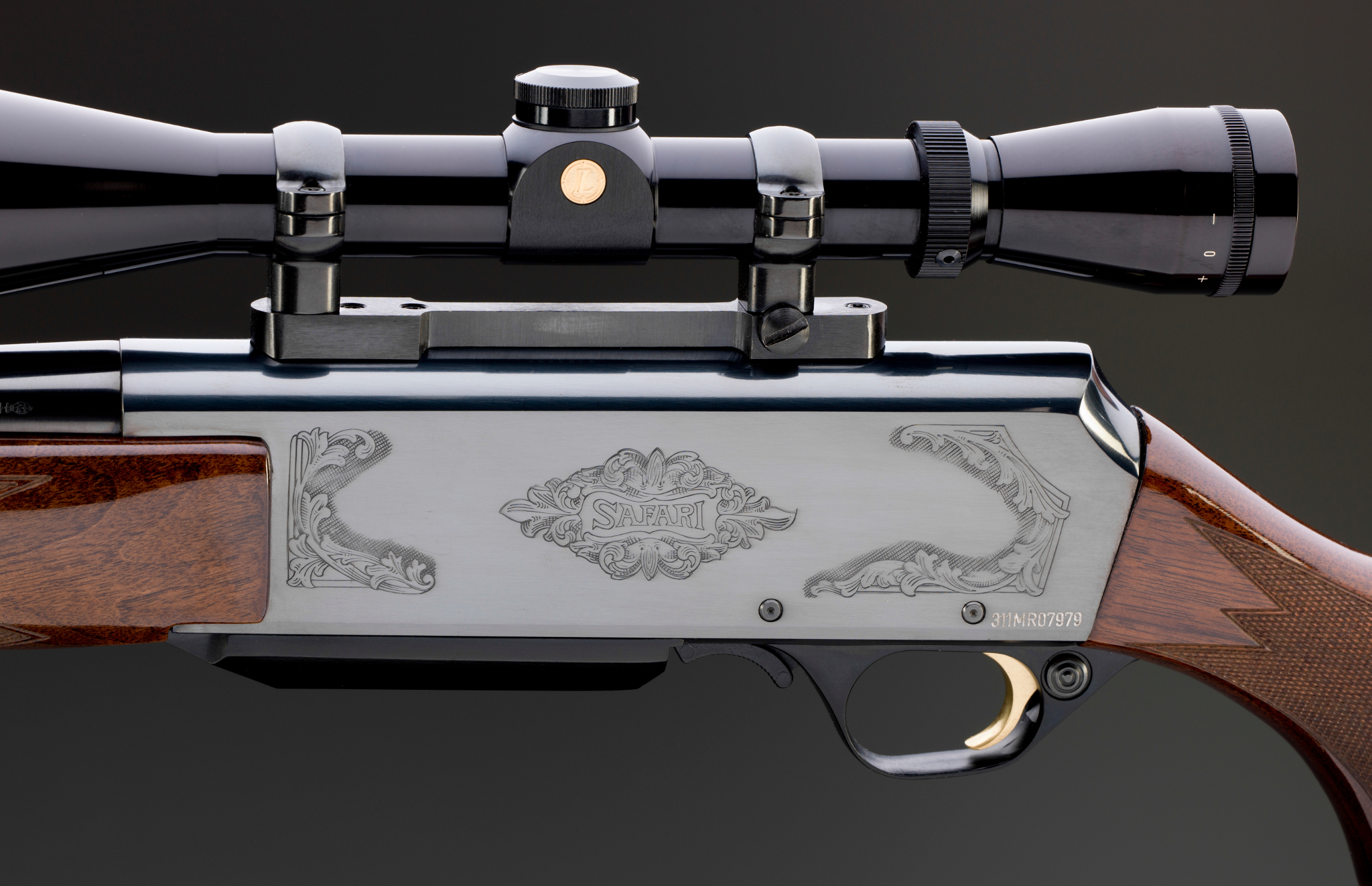
There are advantages and disadvantages inherent in using a self-loading rifle. The obvious advantage is the ability to get a second shot away as quickly as can be accomplished with a double barrel gun, and the reduction in felt recoil because the self-loading action absorbs some of the recoil energy making the rifle more docile to shoot. The disadvantages are, first and foremost, that a self-loading rifle requires more maintenance than a bolt action or a double. In order to keep it running dependably a self-loader must be maintained.
You’ll find the Browning manual with maintenance instructions for the BAR Mark II at Browning’s web site if you click here .
The second thing to watch for is that a self-loading rifle is not going to be as ammunition tolerant as a fixed breech action such as a bolt action. The Browning BAR Mark II Safari has an excellent reputation for dependably functioning with a wide range of factory ammunition although with a self-loading rifle it is important to read the box of new ammunition because some types are not suitable for self-loading rifles and there will be a printed warning on the ammunition box. For handloaders there will be a need to keep your reloads in the range that the self-loader functions well with. Handloaders do not have the same flexibility in tuning loads to a self-loading rifle as they do for a bolt action. This is something the BOSS system can be used to compensate for if you have chosen to have your rifle fitted with one. A self-loading rifle is not necessarily the optimum choice for a handloader because it will eject fired cases well clear of the rifle so you will need to search for them to retrieve them and you will likely have to deal with damaged necks from where they’ve hit the ground.
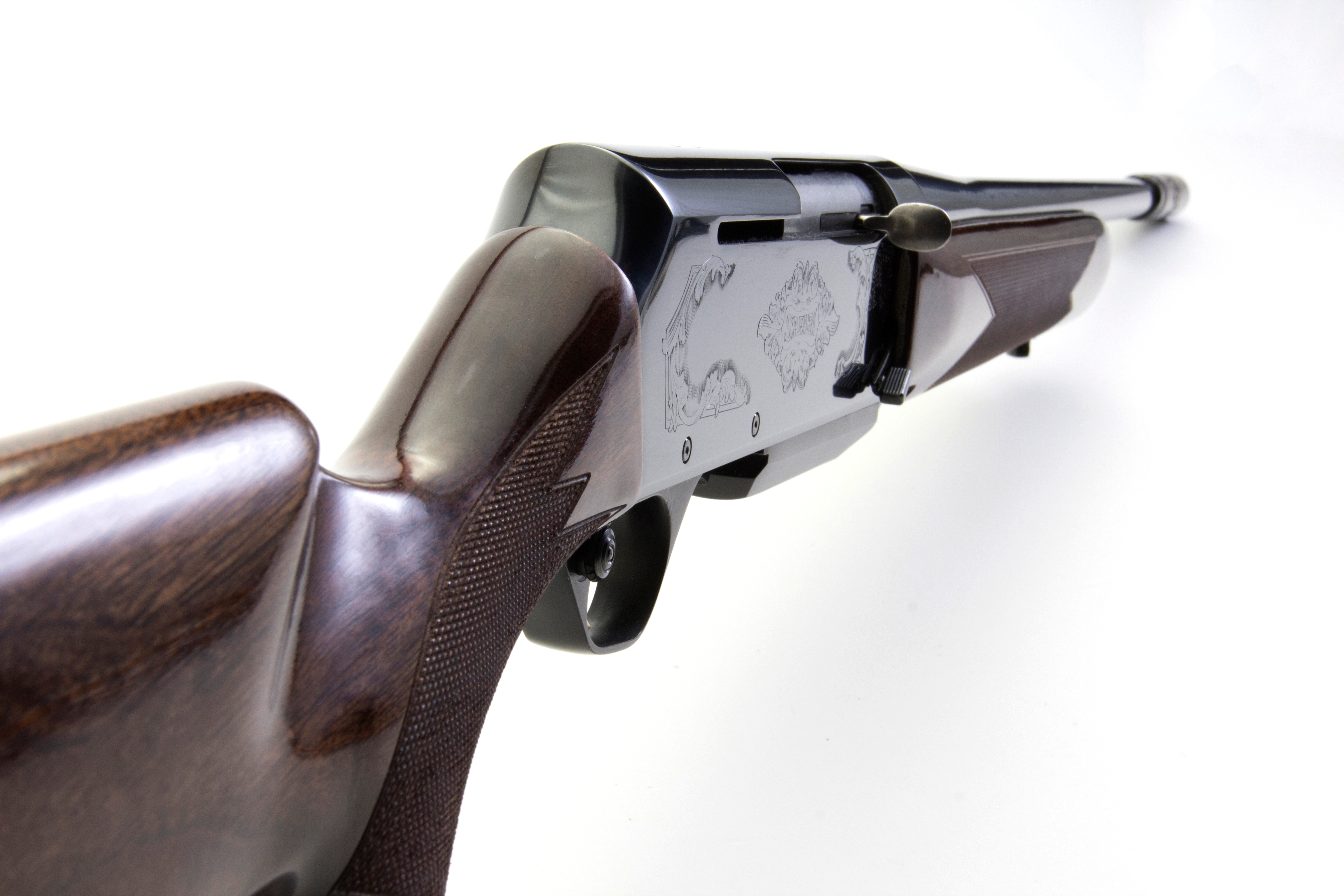
The last disadvantage of a self-loading rifle is that you should not expect a trigger of the same standard as on Winchester’s current Model 70 for example. The self-loading mechanism has more to do than the trigger on a bolt action or double and so you need to expect it to be relatively heavier and likely with a trace of detectable creep. For fast shooting this is not an issue and the BAR will be in its element if used in fast action scenarios like a shotgun.
Specifications and Calibers
The Browning BAR Mark II Safari is available in 25-06, 7mm Remington Magnum, 300 Winchester Magnum, and 338 Winchester Magnum with a 24″ barrel; 243 Winchester, 270 Winchester, 308 Winchester, and 30-06 with a 22″ barrel. The barrel and action are forged steel whilst the trigger guard, trigger and related parts are alloy. Stock wood is Turkish walnut. The BAR Mark II Safari with the BOSS system is available in 270 Winchester and 30-06 with a 22″ barrel, 300 Winchester Magnum and 338 Winchester Magnum with a 24″ barrel.
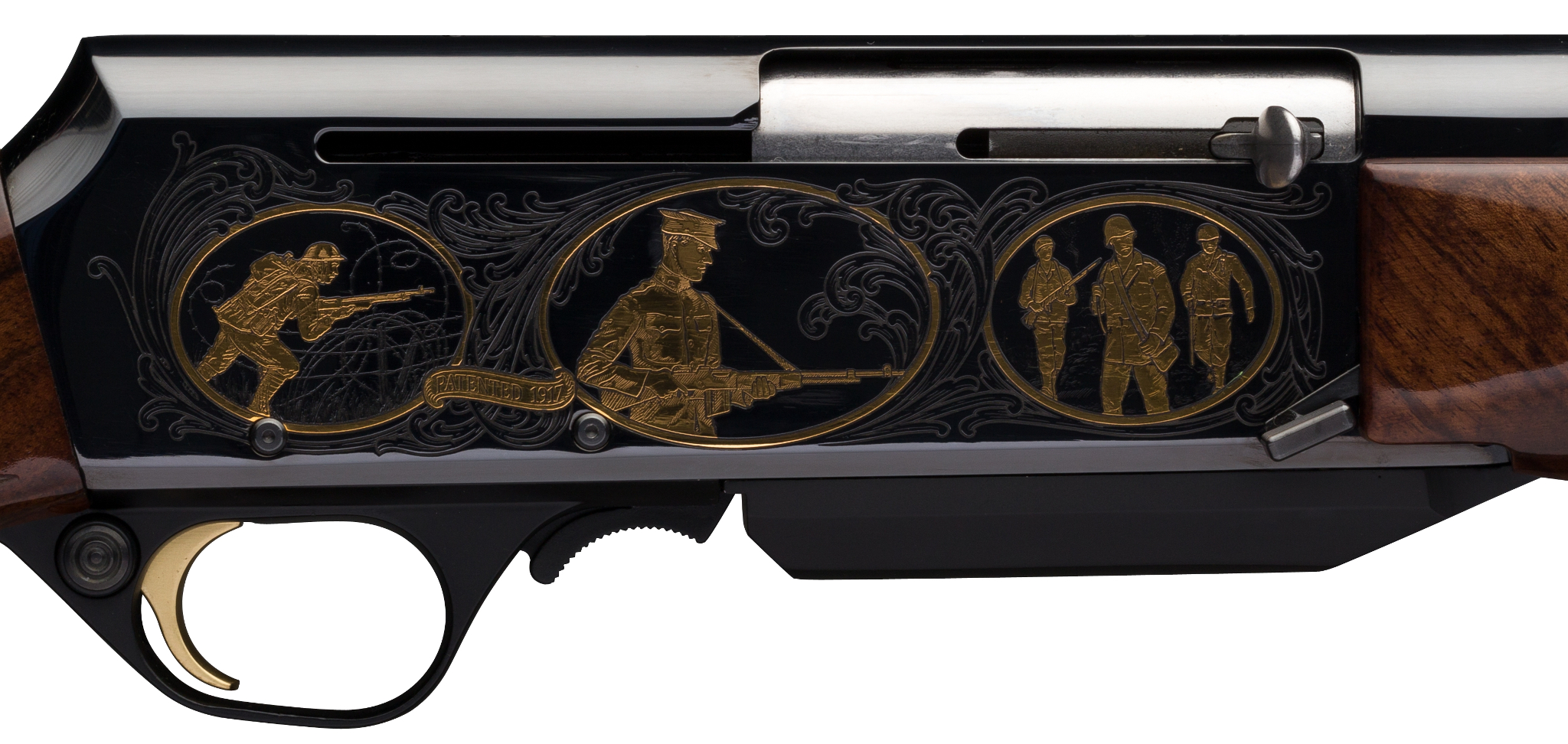
The Browning BAR Mark II Safari is the more expensive version of the BAR and there are less expensive versions that have alloy receivers. Our preference is always for steel and walnut with classic design. If you are looking for a self-loading sporting rifle then the BAR Mark II is one of the best on the market today. It’s a rifle that will give many years of faithful service as long as the owner does their part by looking after it and feeding it a diet that it likes.
You will find the Browning BAR Mark II Safari rifle on Browning’s web site if you click here .
You will find the Browning BAR Mark II Safari rifle with BOSS system if you click here .
You will find the Limited Edition 100th anniversary model if you click here .
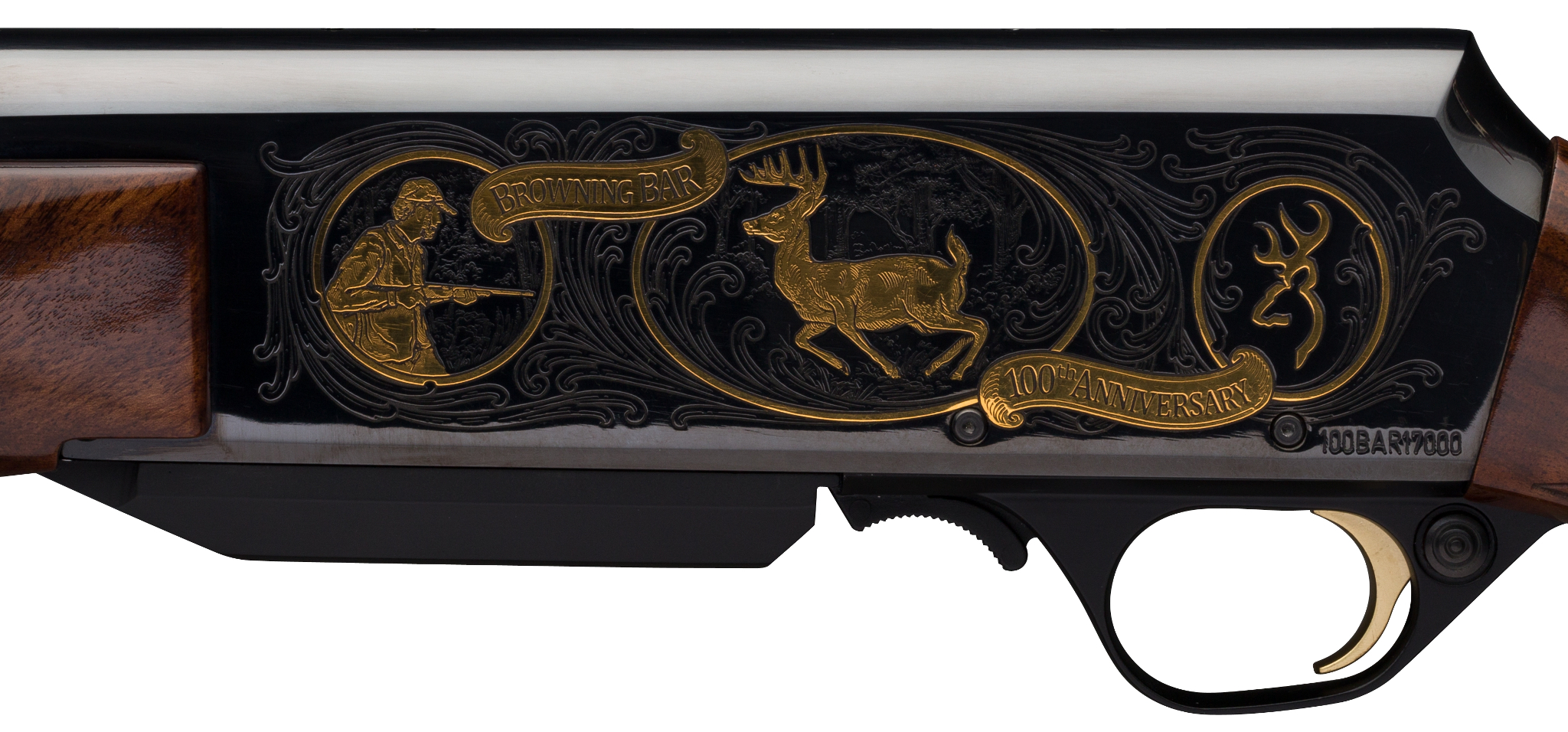
( Pictures courtesy Browning )

Jon Branch is the founder and senior editor of Revivaler and has written a significant number of articles for various publications including official Buying Guides for eBay, classic car articles for Hagerty, magazine articles for both the Australian Shooters Journal and the Australian Shooter, and he’s a long time contributor to Silodrome.
Jon has done radio, television, magazine and newspaper interviews on various issues, and has traveled extensively, having lived in Britain, Australia, China and Hong Kong. His travels have taken him to Indonesia, Israel, Italy, Japan and a number of other countries. He has studied the Japanese sword arts and has a long history of involvement in the shooting sports, which has included authoring submissions to government on various firearms related issues and assisting in the design and establishment of shooting ranges.
Jon C. Branch

You Might Also Like
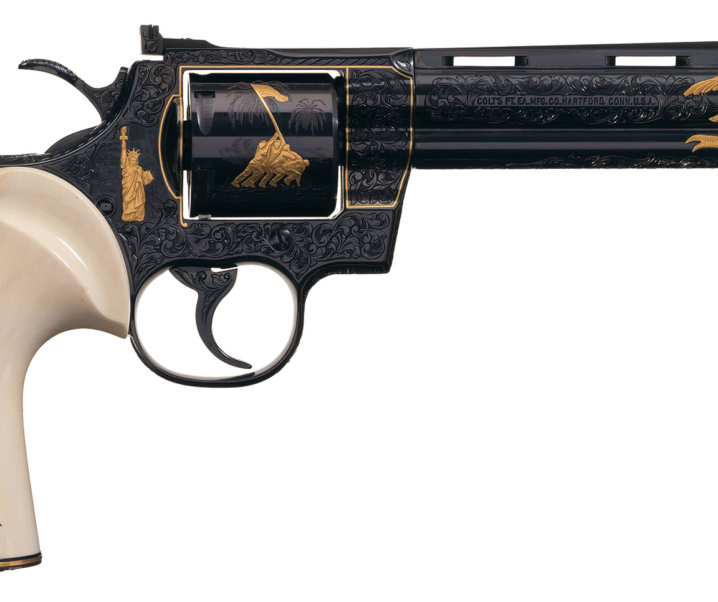
Colt Python Revolver Signed Howard Dove
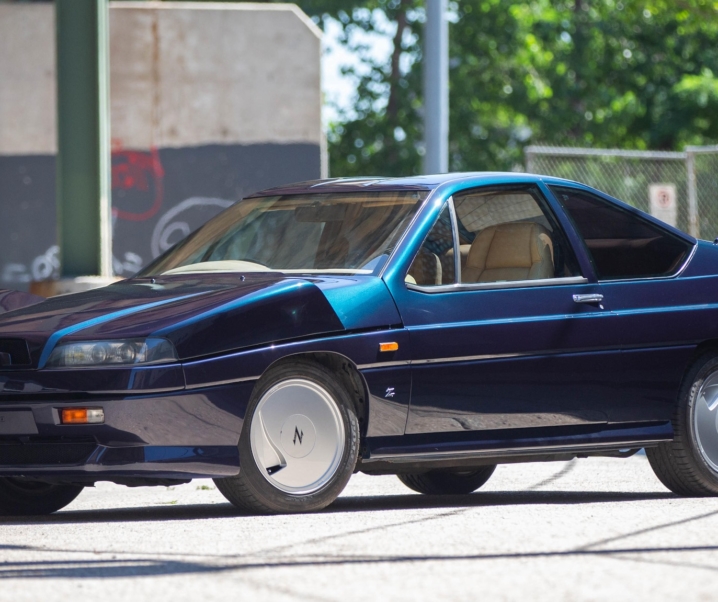
Autech Zagato Stelvio AZ1
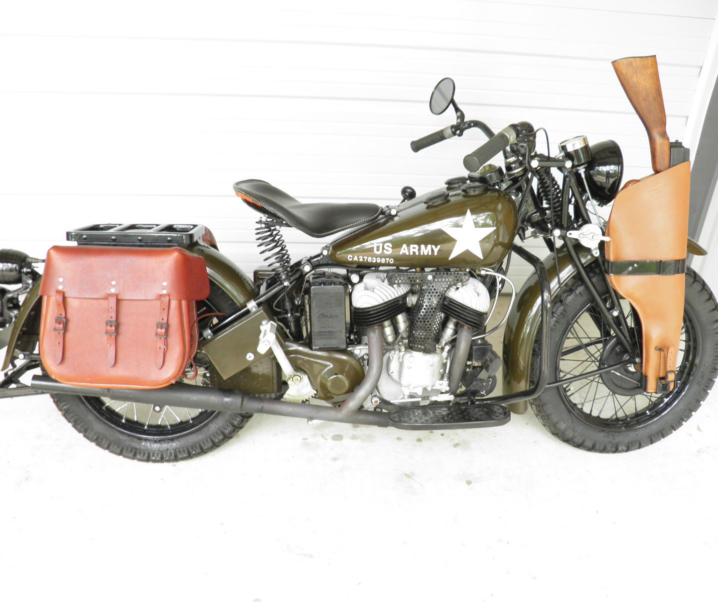
Indian 741 Military
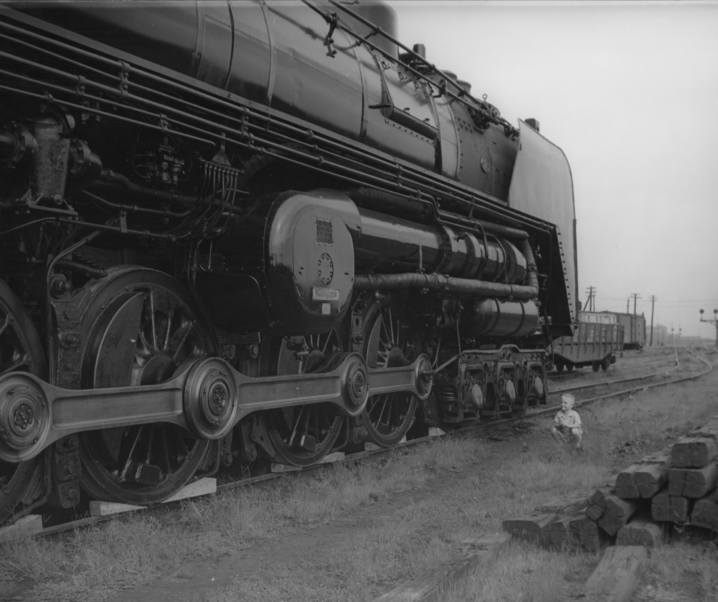
Pennsylvania Railroad S2 Steam Turbine
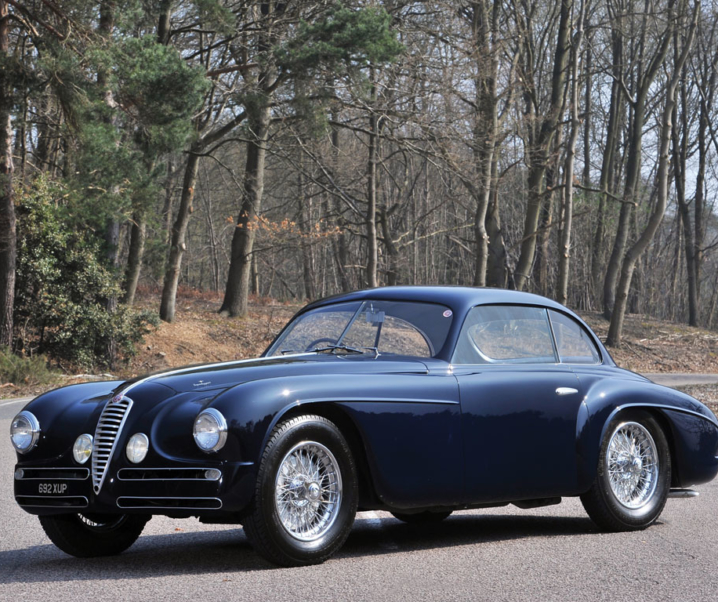
1949 Alfa Romeo 6C 2500 SS Villa d’Este Coupé by Touring
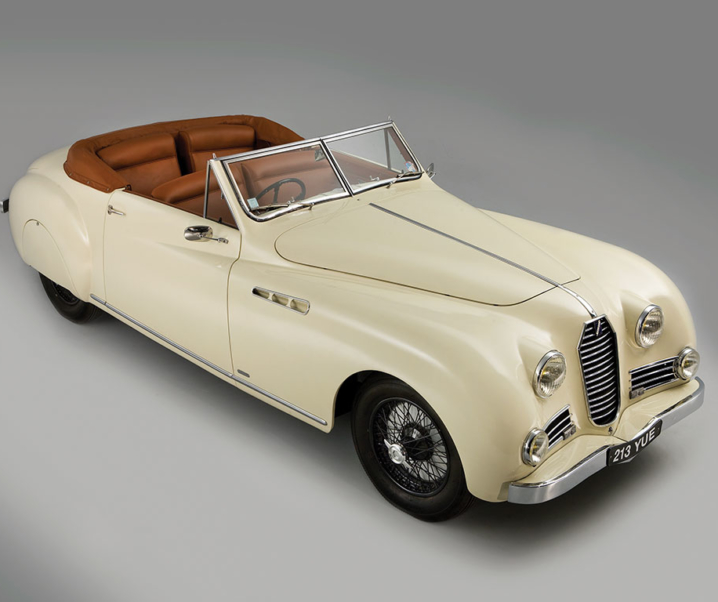
Talbot-Lago T26 Record Cabriolet by Antem
- Leaderboards
- Media New media New comments Search media
Follow along with the video below to see how to install our site as a web app on your home screen.
Note: This feature currently requires accessing the site using the built-in Safari browser.
Watch Out for Scammers!
We've now added a color code for all accounts. Orange accounts are new members, Blue are full members, and Green are Supporters. If you get a message about a sale from an orange account, make sure you pay attention before sending any money!
Browning BAR MK 2 Safari
- Thread starter FL410
- Start date Sep 26, 2023
- The Hide Armory
- Semi-Automatic Rifles
- Sep 26, 2023
strikeeagle1
strikeeagle1 said: It's hard to tell from the photo, but I think I would try to remove the cam pin (firing pin will need to be removed if you can get to the retaining pin) and separate the Bolt from the Bolt Sleeve and see what's going on thereafter. I authored a a technical Manual on the BAR types 1&2 so I might be able to help. These photos will show the parts relationships to get started. However before I undertook all theses steps, unless the parts were really forced into their predicament, you might try tapping the parts to see if they will liberate themselves from the bind, akin to a tight fitting pistol barrel getting jammed upon disassembly / reassembly a gentle tap overcomes close tolerances and allows the barrel to fall free. View attachment 8236246 View attachment 8236247 View attachment 8236248 View attachment 8236249 View attachment 8236250 View attachment 8236251 View attachment 8236256 Click to expand...
FL410 said: strickeeagle1 Thank you so vary much. The information you have given me is more than I could ever have hoped for. It answered all my questions. I am especially appreciative of all the time it took for you to put all this together for me and post it. I am now sure that I will be able to get it disassembled and reassembled correctly. Thank you again for your kindness, time and assistance. Mike Click to expand...
Major Hide Member
- Sep 27, 2023
Earnhardt said: FL410, Since strikeeagle1 has authored 2 manuals on the BAR, and if strikeeagle1 agrees, can we turn this thread into a Q & A, on the BAR? I have some questions on the BAR also… Thanks Click to expand...
Similar threads
- AleksanderSuave
- Feb 5, 2024
- character26
- Sep 22, 2023
- Sep 24, 2022
- Feb 29, 2024
- Bolt Action Rifles
- May 17, 2023
- The Sniper's Hide App is here! Download the app DOWNLOAD

It appears that you are accessing the Browning Website from outside North America. Would you like to visit Browning International?

BAR Mark II Safari

$1,229.99 - $1,849.99 MSRP
The BAR MK II Safari is the ultimate sporting autoloader, featuring the time-honored combination of fine walnut, a precision machined steel receiver and a hammer forged barrel. Classic in looks and contemporary in performance, the BAR MK II Safari is the hunting rifle that sets the standard for every other autoloader on the planet with accuracy, speed and a caliber selection unmatched by any other hunting semi-auto. This magnificent rifle will make autoloading enthusiasts out of the most skeptical riflemen.
The Browning BAR sporting version is certainly a distinct and separate rifle from the military BAR M1918, but its design is the result of the understanding and expertise that started with John M. Browning. His grandson, Bruce Browning, was the driving force behind today's BAR. A large team of automatic firearms experts at the FN factory in Belgium also played a key role in its development. This group of designers, lead by Marcel Olinger, began serious work on the project code named "Carbine 66," with full-scale development and testing done throughout 1966 in preparation for an official 1967 product launch. Both the history and the efficiency of this amazing rifle is unequaled among autoloading rifles.
NOTE: Unless specifically listed as included with a firearm, accessories shown such as scopes, optical sights, rings, ring mounts, optic rails, bipod rails, ammunition, etc. are NOT included. Accessories are available at authorized Browning dealers and here on Browning.com.
- READ A HISTORY OF THE BAR.
- READ A REVIEW OF BRUCE N. CANFIELD'S ARTICLE (NRA AMERICAN RIFLEMAN) ON THE DEVELOPMENT OF BOTH THE MILITARY AND SPORTING BARS.
BAR Mark II Safari Features
- Blued receiver finish
- Gloss finish select walnut stock with cut checkering
- High-relief scroll engraving
BAR Features
- Gas piston operation
- Detachable Box Magazine
- High strength, the seven-lug rotating bolt that locks securely into the barrel for a precise breech-to-chamber relationship.
- Strong action bar/inertia block link-up reduces barrel vibration to improve accuracy
- Integral buffering system reduces wear and stress on the rifle’s operating system
- 308 Win • 22"
- 25-06 Rem • 24"
- 270 Win • 22"
- 30-06 Spfld • 22"
- 300 Win Mag • 24"
- 7mm Rem Mag • 24" NO LONGER IN PRODUCTION
- 338 Win Mag • 24" NO LONGER IN PRODUCTION
- 243 Win • 22" NO LONGER IN PRODUCTION
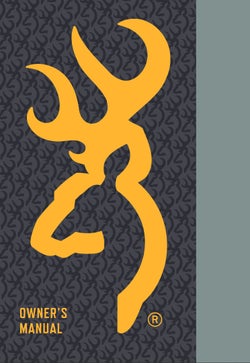

IMAGES
VIDEO
COMMENTS
Step 3: Take your cleaning rod and wrap a cleaning patch on it and pass it through the barrel. Do this a couple of times to make sure that you remove all the dirt, grime, oil, and powder residue. Be careful not to hit the crown with the rod to prevent damaging this area.
Step 3. After washing the bore, put a clean patch on your scrubbing rod and wipe the cylinder dry. After that, insert an oiled patch into the bore. Excessive oil might attract dirt, so don't apply too much. Make sure the receiver is also clean. To do it, you must first delete the trigger group.
http://www.downeastgunworks.com http://twitter.com/#!/mainegunworks http://www.facebook.com/gunworks Jim Green, gunsmith and owner of GunWorks of Harrington,...
Cleaning the chamber of a Browning BAR Safari rifle is a straightforward process. Here's a step-by-step guide: Ensure the firearm is unloaded before starting the cleaning process. Remove the magazine and visually inspect the chamber and barrel to confirm there is no ammunition present.
Created Date: 8/9/2000 9:34:43 AM
Reassemble the Browning Bar, making sure that all parts are securely tightened. Test fire the Browning Bar to make sure that the gas piston is functioning properly. Turn off the gas and the burner on the Bar Safari Mark 2. Unscrew the brass retaining nut that holds the regulator screw in place.
Unload the Browning BAR Safari 2 and make sure the chamber is empty. Put on safety glasses for protection. Retract the operating handle to the rear and allow the bolt to move forward until it locks in place. Unscrew the takedown nut from the butt of the stock. Lift the barrel assembly away from the receiver and set aside.
Cleaning the Browning BAR. Step 1: Cleaning the barrel. Start by attaching a bore brush to a cleaning rod and soak it in gun cleaning solvent. Insert the rod into the chamber end of the barrel and push it through, ensuring that the brush makes contact with the entire length of the barrel.
This video is about how I clean my Browning BAR Mark 3. I could not find much info on how to clean this rifle so I decided to take it apart and put it back ...
Just follow the manual when taking the slide rails out of the receiver to clean the gas piston. Watch how you take it apart. The gas piston doesn't really get that dirty. But they say every so often to have the piston cleaned out. Read the manual and you will see what I mean. I had a Browning Bar Mark II Safari 270 BOSS. Awesome gun.
Disassembly and cleaning of my Browning BAR in .308 caliber. My Dad gave it to me a few weeks back. The scope is damaged but the gun is in fine shape. I am s...
Friend Joe Pirani was a Browning fan from the word go. He had Browning Superposed shotguns for field and trap and when it came to rifles, he was stuck on the BAR (Browning Automatic Rifle) that went with him on all his hunting trips. When we did get to serious discussions relating to the gun on an antelope/mule deer hunt near Jordon, Montana ...
BROWNING BAR® MARK II AUTOLOADING RIFLE If you have any questions about your new firearm, this owner's manual or other Browning products, contact: Browning Customer Service One Browning Place Morgan, UT 84050-9326 Phone: (800) 333-3288 browning.com Please use the space below to record information about your new firearm.
As a newby to this forum and a new BAR Long Trac 30.06 owner I have a question regarding a thorough cleaning of my new rifle. My owners manual gives info on barrel cleaning & trigger group cleaning, but nothing on removing the forearm & cleaning the gas piston and gas cylinder area. How often do you BAR owners clean this area.
Peele, there are a few utube videos showing how to disassemble the BAR that might help you out. A friend of mine has one but as far as i know he has never taken it apart. Just put a search in on how to disassemble the browning bar safari. I may have to change my way of thinking, by starting. Alaska444, zkovach and ThePeele.
Specifications and Calibers. The Browning BAR Mark II Safari is available in 25-06, 7mm Remington Magnum, 300 Winchester Magnum, and 338 Winchester Magnum with a 24″ barrel; 243 Winchester, 270 Winchester, 308 Winchester, and 30-06 with a 22″ barrel. The barrel and action are forged steel whilst the trigger guard, trigger and related parts ...
Browning BAR MK 2 Safari. Thread starter FL410; Start date Sep 26, 2023; Forums. The Hide Armory. Semi-Automatic Rifles . F. FL410 Private. Minuteman. Sep 11, 2018 10 18. Sep 26, 2023 #1 ; During cleaning bolt went in to the the lock position outside the barrel. ... During cleaning bolt went in to the the lock position outside the barrel ...
Allow proper distance (eye relief) between a scope and your eye when firing a scoped rifle, shotgun or pistol. Do not use unorthodox shooting methods that could cause the rearward travel of the slide or bolt of a firearm to contact your eyes, face or hands.
This is the Browning BAR assembly & disassembly ( Part 2 of 2 ).
http://www.youtube.com/user/kwgunworkshttp://www.ammunitiondepot.com John and I take this beastly yet beautiful rifle completely down. I am someone who gets ...
This is the Browning BAR assembly & disassembly ( Part 1 of 2 ).
Make sure to keep the engraving clean. Nice gun. Reply reply ... It's a Browning BAR Safari MK2 .270. It's serial states it's from the year 2000, so it's fairly new. I love the rifle and am excited to take it out to give it a shot. I love this new rifle and wanted to share it. I don't plan on ever getting rid of this rifle, so it's now a member ...
The BAR MK II Safari is the ultimate sporting autoloader, featuring the time-honored combination of fine walnut, a precision machined steel receiver and a hammer forged barrel. Classic in looks and contemporary in performance, the BAR MK II Safari is the hunting rifle that sets the standard for every other autoloader on the planet with accuracy ...